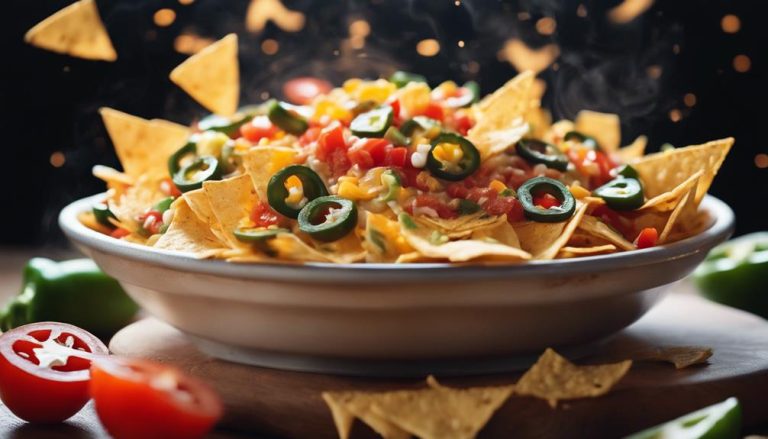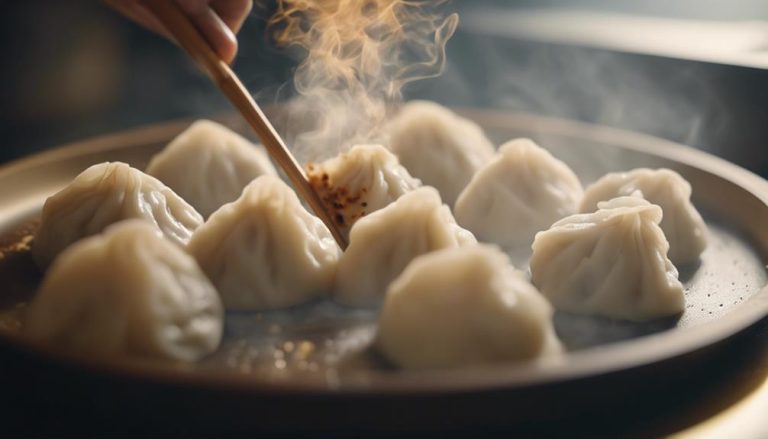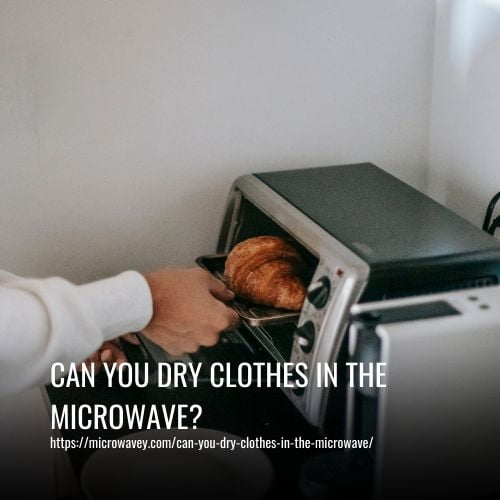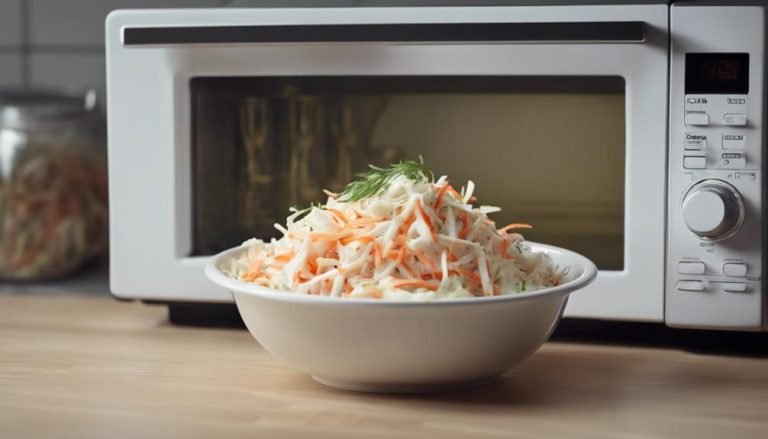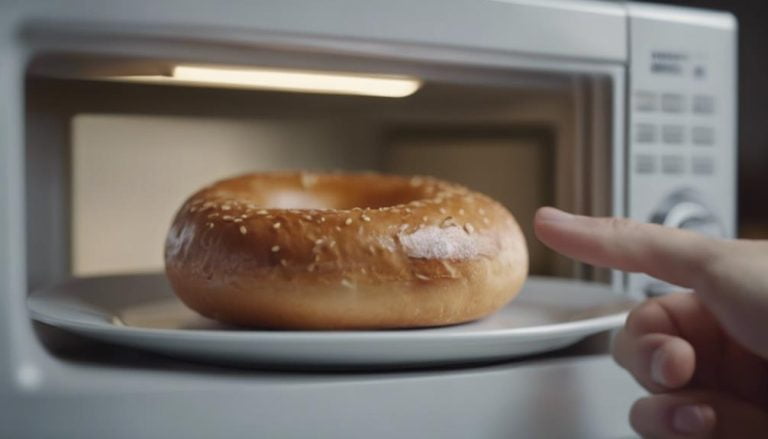Can You Microwave Baby Food
Yes, you can microwave baby food. However, it is important to follow proper techniques to maintain the nutritional quality and safety of the food. Use microwave-safe containers and cover them to ensure even heating.
Stir the food well and test the temperature before feeding it to your baby to avoid any hot spots. Additionally, avoid microwaving foods in plastic containers, as this can lead to the release of harmful chemicals.
Overall, microwaving baby food can be a convenient option as long as you take the necessary precautions.
Key Takeaways
- Thaw baby food properly before microwaving to ensure safe and even heating
- Use microwave-safe glass containers and cover with a lid for efficient cooking
- Prioritize nutrient retention by using minimal water and avoiding overcooking
- Always test food temperature and allow to cool before feeding to prevent burns
Safety Considerations for Microwaving Baby Food
When microwaving baby food, prioritizing safety considerations is essential to ensure proper food preparation and minimize potential health risks. Thaw baby food in the refrigerator or using the microwave's defrost setting to ensure even heating.
Use microwave-safe containers, preferably glass, to heat baby food and avoid harmful chemicals from plastic containers. To maintain food safety, cover the baby food with a lid while microwaving to retain moisture and prevent splattering.
It is crucial to thoroughly heat baby food to at least 75 degrees Celsius to kill bacteria and reduce the risk of foodborne illnesses. Following these guidelines for microwaving baby food can help parents provide safe and nutritious meals for their little ones.
Benefits of Using Microwave for Baby Food
Utilizing the microwave for preparing baby food offers numerous benefits. This includes the generation of steam that softens fruits and vegetables, ideal for young ones' consumption. The method is efficient, providing quick and easy cooking for busy parents.
The gentle cooking process in the microwave helps retain nutrients in the baby food. This is supported by studies from Harvard and Cornell University. Microwaving baby food in appropriate glass dishes with airtight lids creates a steam chamber, preserving the essential vitamins and minerals vital for the baby's growth and development.
Compared to traditional cooking methods, using the microwave is a convenient way to ensure that the nutrients in the baby food are retained. This makes it a practical choice for caregivers.
Risks Associated With Microwaving Baby Food
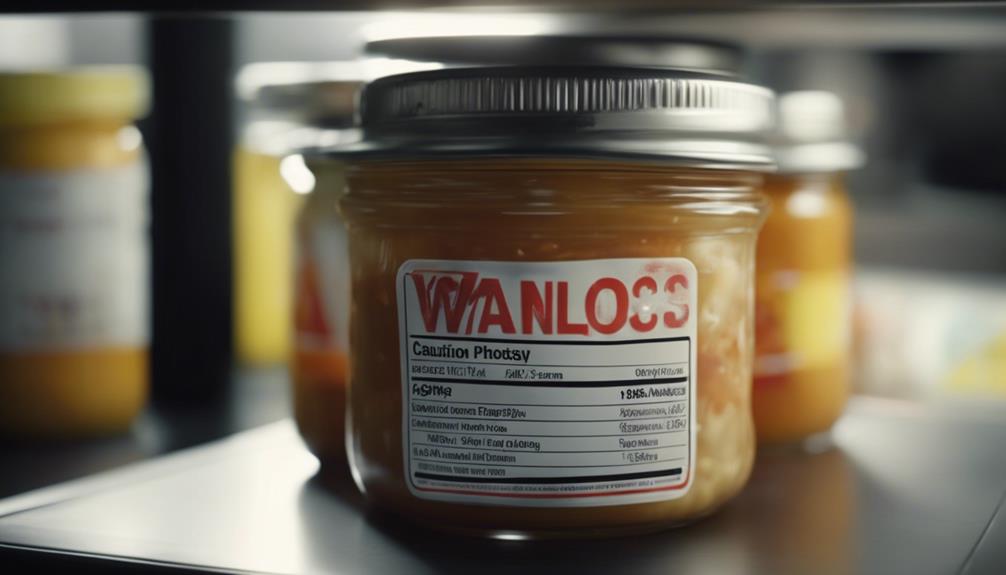
Microwaving baby food poses potential risks, including uneven heating that can create hot pockets and increase the risk of burns. When considering the safety of microwaving baby food, it is crucial to be aware of the following:
- Uneven Heating: Microwaves can heat food unevenly, leading to hot spots that may burn your baby's mouth or throat.
- Burn Risk: The potential for hot pockets in microwaved baby food increases the risk of burns, especially if not mixed properly before serving.
- Plastic Containers: Using cheap plastic containers for microwaving baby food can release harmful chemicals into the food, posing health risks to infants.
It is essential to take precautions and use safe heating methods to mitigate these risks when preparing baby food.
Proper Techniques for Microwaving Baby Food
When microwaving baby food, it is crucial to prioritize safety by using microwave-safe containers and covering the food with a lid to maintain moisture.
Timing plays a key role in reheating baby food to ensure it reaches an appropriate temperature to kill bacteria.
Stirring the food during microwaving helps distribute heat evenly for a consistent temperature throughout.
Safety in Microwaving
In ensuring the safety of microwaving baby food, it is essential to cover the food with a lid to retain moisture and prevent splattering.
When it comes to safety in microwaving, using microwave-safe glass containers instead of plastic is crucial to avoid harmful chemicals leaching into the food.
Additionally, avoiding reheating leftover baby food in the microwave is important to prevent bacterial growth and potential food poisoning risks.
Ensuring proper heating of baby food in the microwave is vital to kill bacteria and maintain food safety for your baby.
Timing for Reheating
To ensure the optimal reheating of baby food in the microwave, attention to timing and proper techniques is paramount for maintaining food quality and safety. The heating time required for reheating baby food typically ranges from 10-15 seconds at a medium temperature, but this may vary depending on the quantity and initial temperature of the food.
It is advisable to preheat the microwave before reheating the baby food to achieve consistent results. Additionally, stirring the food at different stages during microwaving helps to ensure uniform heating throughout.
Remember always to check the temperature of the reheated baby food before feeding it to the baby to prevent any burns or discomfort.
Stirring for Evenness
For optimal heating consistency and safety when microwaving baby food, thorough stirring post-microwaving is essential to achieve even distribution of heat and prevent hotspots. Proper stirring ensures the baby food reaches a uniform temperature, reducing the risk of scalding and ensuring safe consumption. Here are three key reasons why stirring for evenness is crucial:
- Prevents Hotspots: Stirring helps eliminate areas of concentrated heat, preventing hotspots that could potentially burn your baby's mouth.
- Ensures Evenness: Proper mixing guarantees that the entire dish is heated uniformly, avoiding cold spots that may pose a choking hazard.
- Maintains Suitable Temperature: Thoroughly stirring the baby food post-microwaving helps achieve a consistent and safe temperature for feeding.
Guidelines for Reheating Baby Food in the Microwave
When reheating baby food in the microwave, it is essential to utilize microwave-safe containers to maintain safety and prevent chemical leaching.
Heating the baby food at a medium temperature for 10-15 seconds helps prevent overheating, ensuring that the food is warm but not too hot.
Preheating the microwave before reheating the baby food is crucial to achieve even heating throughout.
Stirring the food at different stages while reheating is recommended to distribute heat uniformly and avoid creating hot spots that could burn your baby's mouth.
Always remember to check the temperature of the reheated baby food before feeding it to your baby to prevent any burns and ensure a safe feeding experience.
Factors to Consider When Microwaving Baby Food
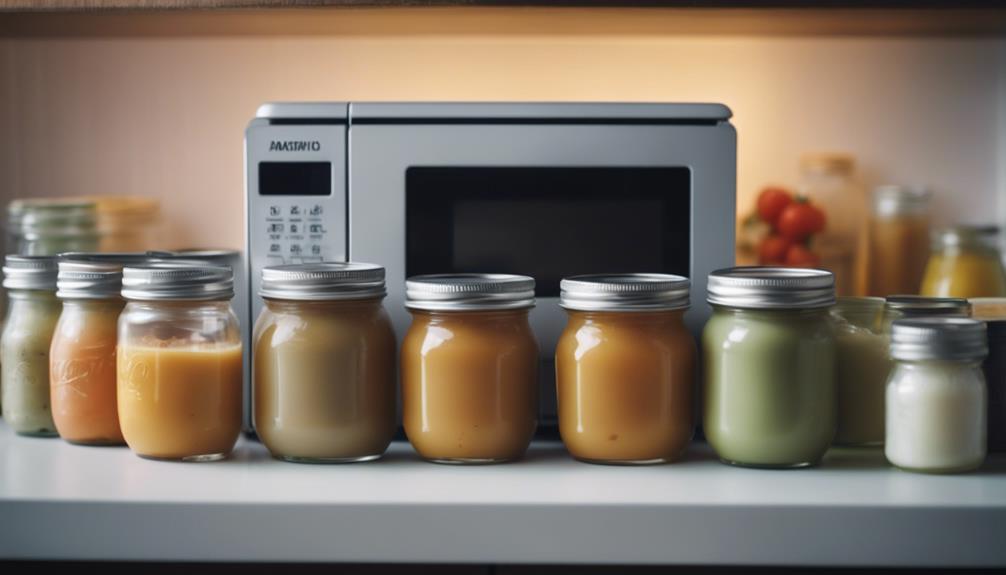
Consider using microwave-safe containers when heating baby food to ensure the safety and well-being of your child.
When it comes to heating baby food in the microwave, there are several factors to keep in mind:
- Use Safe Containers: Opt for microwave-safe containers to prevent any harmful chemicals from leaching into the baby food.
- Cover While Heating: Always cover the baby food with a lid while microwaving to retain moisture and ensure even heating throughout.
- Thorough Heating is Key: Make sure the baby food is thoroughly heated to kill bacteria and prevent foodborne illnesses, prioritizing the safety of your baby.
Common Misconceptions About Microwaving Baby Food
Misconceptions about microwaving baby food can lead to unnecessary concerns among parents. Understanding microwave safety tips and choosing the best containers for heating baby food are essential.
Addressing these misconceptions can help ensure the safe and efficient preparation of baby meals.
Microwave Safety Tips
What precautions should be taken when microwaving baby food to ensure safety and optimal heating?
When it comes to microwaving baby food, it's essential to follow specific safety tips to protect your little one. Here are some key guidelines to keep in mind:
- Use microwave-safe containers: Opt for containers labeled as microwave-safe to prevent harmful chemicals from leaching into the food.
- Cover with a lid: Ensure to cover the baby food with a lid while microwaving to retain moisture and promote even heating, reducing the risk of hot spots.
- Stir well: After heating, stir the baby food thoroughly to distribute heat evenly and avoid scalding before serving.
Best Food Containers
When selecting food containers for microwaving baby food, prioritize using microwave-safe glass containers to ensure the safety and quality of the heating process.
It is essential to avoid microwaving baby food in plastic containers to prevent potential health risks associated with harmful chemicals leaching into the food.
Opt for containers with airtight lids to retain moisture and nutrients, ensuring that the baby's food is thoroughly heated when using a microwave.
Heat-resistant glass containers are ideal for even heating and safe reheating of baby food in the microwave.
Proper selection of food containers is crucial in maintaining the safety and quality standards when it comes to microwaving food for babies.
Frequently Asked Questions
Can Microwaving Baby Food Affect the Nutritional Value of the Food?
Microwaving baby food can impact its nutritional value. The heating process in microwaves is efficient for retaining nutrients in baby food. When done properly, microwaving without excess water can help maintain the food's nutrients, making it a safe option.
Is It Safe to Microwave Breast Milk or Formula for Babies?
When warming breast milk or formula for babies, it is crucial to prioritize safety precautions. Utilize alternative heating methods like warm water baths to prevent nutrient loss and hot spots. Avoid microwaving breast milk to ensure your baby receives optimal nutrition.
How Can You Tell if Baby Food Is Too Hot After Microwaving?
To ensure baby food is at a safe temperature post-microwaving, perform a temperature test by placing a small amount on your wrist. Look for steam and gently touch the food for scalding signs. Allow it to cool before feeding to prevent burns.
Can Microwaving Baby Food Cause Hot Spots That Could Burn a Baby's Mouth?
Uneven heat distribution in microwaved baby food can create hot spots, risking burns in a baby's mouth. Proper microwave settings, temperature control, and cooling methods are essential for baby safety. Regularly test food temperature and consider spoon feeding for added caution.
Are There Certain Types of Baby Food That Should Not Be Microwaved?
Certain types of baby food, such as those with chunks, high fat content like breastmilk, acidic fruits, additives, or thin consistencies, should be avoided when microwaving due to safety concerns, uneven heating, altered taste, and potential splattering. Consider alternative heating methods for optimal food safety and temperature control.
Conclusion
In conclusion, while microwaving baby food can be a convenient and efficient way to prepare meals for infants, it is crucial to prioritize safety measures and proper techniques to minimize potential risks.
By following guidelines, using suitable containers, and being mindful of heating processes, caregivers can ensure the safe and effective reheating of baby food in the microwave.
Just as a stitch in time saves nine, a cautious approach to microwaving baby food can prevent unnecessary complications.

